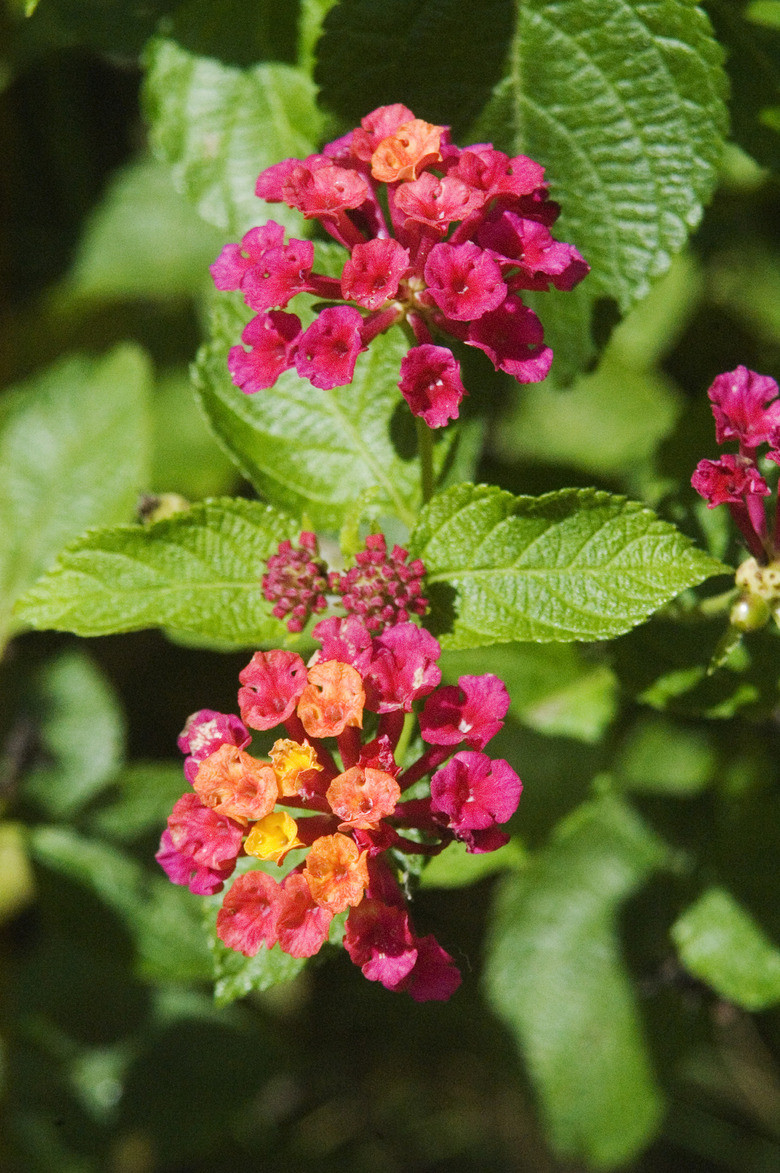Why Is My Lantana Plant Dying?
Sometimes a lantana's dormancy can be mistaken for decline. In U.S. Department of Agriculture zones 8 through 11, lantana (lantana spp.), becomes dormant in winter. Because cooler temperatures trigger loss of both bloom and foliage, lantanas can appear to be nothing more than a pile of twigs by winter. The plants resume growth when temperatures rise in the spring. The minimum temperature for lantana is 10 degrees; however, depending on the variety, a hard freeze, which is 25 degrees and below, can damage or kill the plants. In USDA zones 7 and under, many varieties of lantana can be killed in hard freezes and are grown as annuals.
Orientation to Sun
A plant that revels in hot, sunny sites, lantanas will seldom thrive in a northern exposure. If a lantana plant is not blooming and growth is less vigorous, assess how much sunshine it is receiving. Too much shade can also invite fungal disease. In areas with hot summers, some afternoon shade is acceptable. Established lantanas are incredibly heat-tolerant and do well in a south- or west-facing bed.
Soil Moisture
Lantanas require well-drained soil and will languish in cold, soggy soils. If water pools on the soil surface, or the soil is often muddy, it is not draining well. To prepare the soil, incorporate compost into the planting area, mixing well with native soil. If the plant has been sited properly and its cultural requirements have been met, but it is still in decline, pest infestation or disease may be the culprit.
Pest Attack
Lace bugs, mealybugs, aphids, whitefly and spider mites can be destructive to lantana, particularly if there is a heavy infestation. The leaves of the plant can appear yellow or stippled and sooty mold may be present. Check the undersides of the leaves for insects. Control can be achieved with a horticultural oil spray, mixed with water and sprayed according to label instructions. To avoid burning the plant, it should not be used when temperatures are above 90 degrees.
Gray Mold
Botrytis blight, also known as gray mold, may occur in areas with high humidity. When the lantana's leaves and flowers wilt and rot, this disease could be the cause. Overhead watering can exacerbate the problem. Using pruners that have been disinfected in a Lysol solution of one part Lysol to four parts of water, cut out the affected areas, soaking pruners for one minute between cuts. Then dispose of all infected debris, including the leaf litter around the plant. If the plant continues to decline, it is best to dispose of the entire plant. Gray mold could be transmitted to the other plants in the garden.
